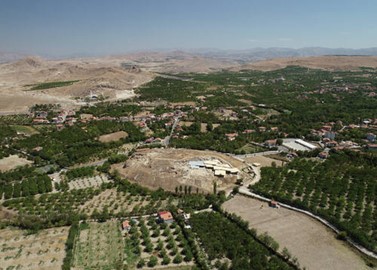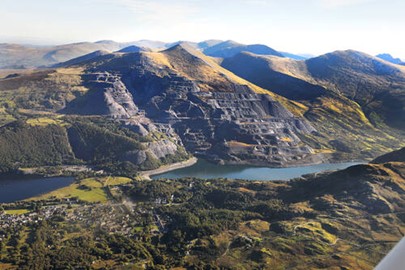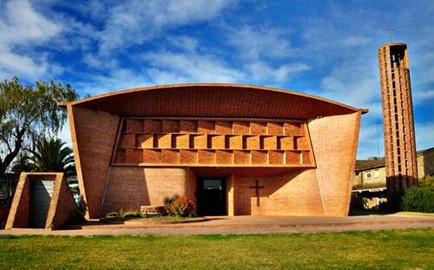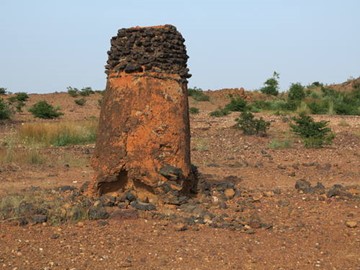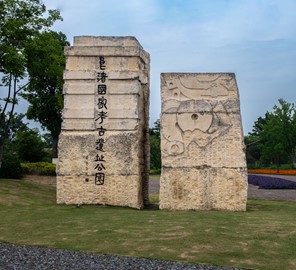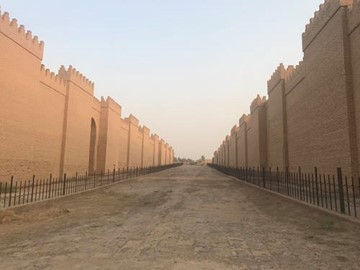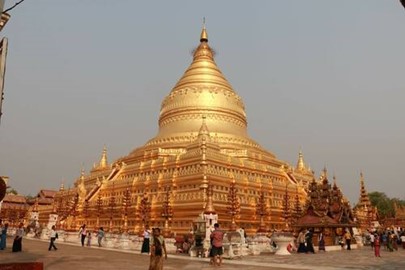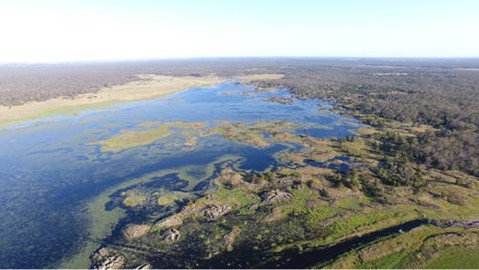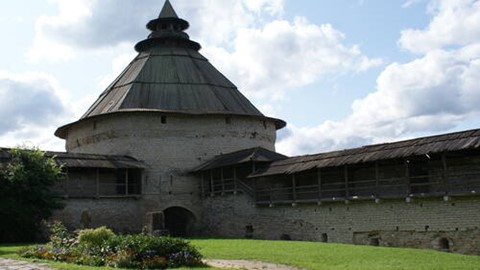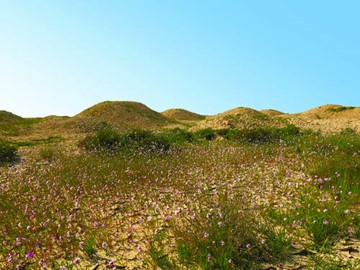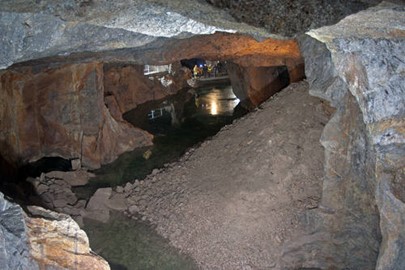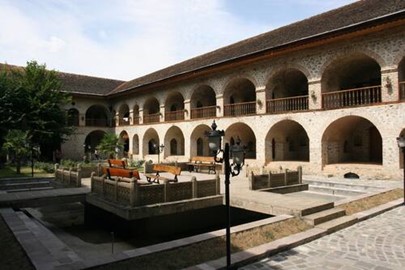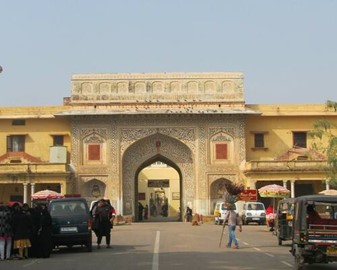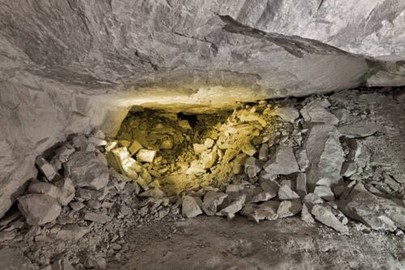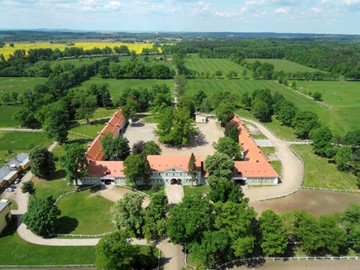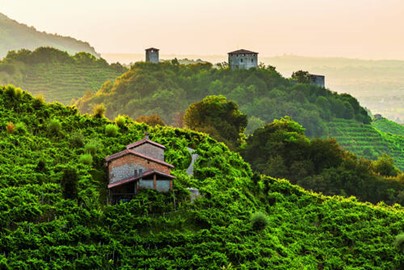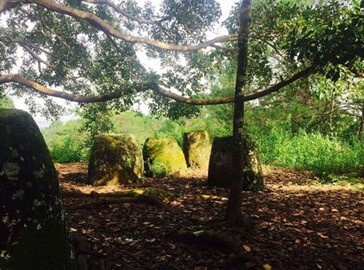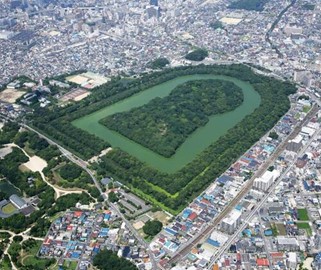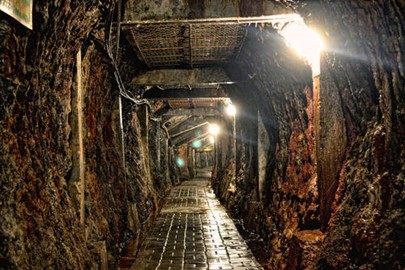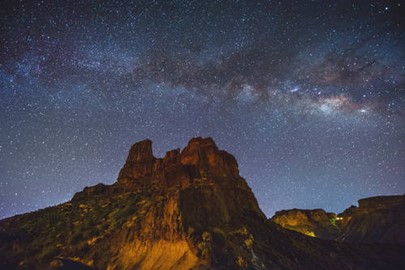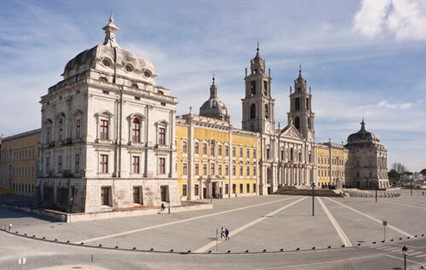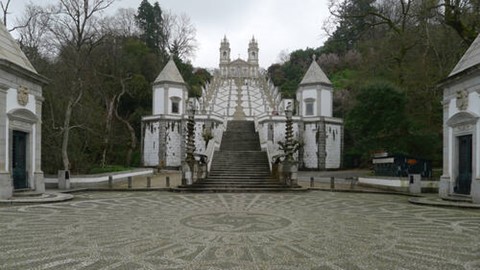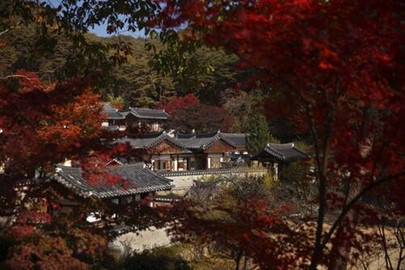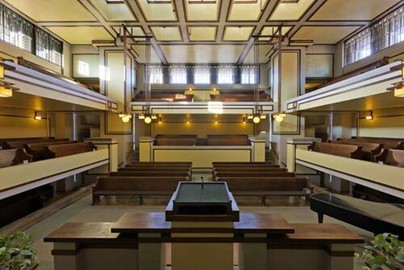search
Arslantepe Mound
Arslantepe Mound, a UNESCO World Heritage site in Turkey, recognized in 2021, is a 5,000-year-old archaeological tell near Malatya, tracing human settlement from the 4th millennium BCE to the Roman era. This ancient site reveals the rise of early state societies with mudbrick palaces, a temple, and the world’s oldest swords, reflecting advanced metallurgy and governance. Known as the 'Lion Hill' for its Hittite lion statues, Arslantepe offers a key window into Turkey’s prehistoric urban development and cult... Read More
The Slate Landscape of Northwest Wales
The Slate Landscape of Northwest Wales, a UNESCO World Heritage site in the UK, recognized in 2021, is a historic industrial region in Gwynedd shaped by slate quarrying from the 18th to 20th centuries. Featuring dramatic quarries, railways, and workers’ villages, it powered the global roofing slate trade, with sites like Penrhyn and Dinorwig showcasing innovative engineering and rugged beauty. This cultural landscape reflects Wales’ industrial heritage and social history, highlighting the resilience of comm... Read More
Church of Atlántida
The Church of Atlántida, a UNESCO World Heritage site in Uruguay, recognized in 2021, is a modernist masterpiece designed by engineer Eladio Dieste in 1958 near Montevideo. Known as Iglesia de Cristo Obrero, its innovative brick architecture features undulating walls and a bell tower built without steel reinforcement, showcasing Dieste’s pioneering use of reinforced ceramics. This humble yet striking structure blends functionality with aesthetic grace, reflecting Uruguay’s 20th-century architectural ingenui... Read More
Ferrous Metallurgy Sites
The Ferrous Metallurgy Sites, a UNESCO World Heritage site in Burkina Faso, recognized in 2019, are ancient iron production complexes spanning five locations, with the oldest at Douroula dating to the 8th century BCE. Featuring standing natural-draft furnaces, mines, and traces of dwellings, these sites showcase early smelting techniques and their evolution through the second millennium CE at Tiwêga, Yamané, Kindibo, and Békuy. They highlight Burkina Faso’s pioneering role in African metallurgy, preserving ... Read More
Liangzhu
The Archaeological Ruins of Liangzhu City, a UNESCO World Heritage site in China, recognized in 2019, are a 5,300-year-old urban settlement in Zhejiang Province, showcasing the Neolithic Liangzhu culture (3300-2300 BCE). Featuring a sophisticated city layout with moats, walls, a palace, and intricate jade artifacts, it reflects early state formation and advanced hydraulic engineering in East Asia. This well-preserved site offers a rare glimpse into China’s ancient urban civilization, highlighting its cultur... Read More
Babylon
Babylon, a UNESCO World Heritage site in Iraq, recognized in 2019, is an ancient Mesopotamian city south of Baghdad, thriving from the 18th to 6th centuries BCE as a capital of the Babylonian Empire. Renowned for its mudbrick ruins—including remnants of the Ishtar Gate, ziggurat foundations, and city walls—it reflects advanced urban planning, architecture, and cultural achievements like the Code of Hammurabi. This iconic site embodies Iraq’s pivotal role in early civilization, offering a tangible link to on... Read More
Bagan
Bagan, a UNESCO World Heritage site in Myanmar, recognized in 2019, is an ancient city along the Irrawaddy River, famed as the capital of the Pagan Kingdom from the 9th to 13th centuries. Its vast plain features over 3,500 Buddhist temples, pagodas, and monasteries, showcasing intricate brick architecture and religious art from a golden era of Burmese culture. This sacred landscape reflects Myanmar’s historical devotion and architectural prowess, offering a stunning testament to a once-thriving medieval civ... Read More
Budj Bim
Budj Bim, a UNESCO World Heritage site in Australia, recognized in 2019, is a cultural landscape showcasing one of the world’s oldest aquaculture systems, developed by the Gunditjmara people over 6,600 years ago. Featuring stone channels, weirs, and traps built along ancient lava flows, it enabled sustainable eel harvesting and supported permanent settlements with circular stone huts. The first Australian site listed solely for its Aboriginal cultural significance, Budj Bim reflects the Gunditjmara’s ingenu... Read More
Churches of the Pskov School of Architecture
The Churches of the Pskov School of Architecture, a UNESCO World Heritage site in Russia, recognized in 2019, are a group of medieval religious buildings in Pskov, dating from the 12th to 17th centuries. Featuring distinctive whitewashed stone structures with bell towers and porches, they reflect a unique regional style that influenced Russian architecture during the Pskov Republic’s independence. These well-preserved churches and monasteries highlight Russia’s cultural and artistic heritage, showcasing loc... Read More
Dilmun Burial Mounds
The Dilmun Burial Mounds, a UNESCO World Heritage site in Bahrain, recognized in 2019, are a vast necropolis of over 11,000 ancient tombs dating from 2050 to 1750 BCE, linked to the Bronze Age Dilmun civilization. These beehive-shaped, stone-built mounds, scattered across fields, reflect a sophisticated funerary tradition tied to Bahrain’s role as a thriving trade hub in the Persian Gulf. Offering insight into Dilmun’s social structure and beliefs, this archaeological landscape preserves a key chapter of th... Read More
Erzgebirge Mining
Erzgebirge Mining, a UNESCO World Heritage site spanning Czechia and Germany, recognized in 2019, is a historic mining region in the Ore Mountains active from the 12th to 20th centuries. Featuring mines, smelters, and towns like Freiberg and Jáchymov, it showcases medieval to modern mining technology that fueled Europe’s silver, tin, and uranium booms. This cross-border landscape reflects centuries of industrial innovation and cultural exchange, highlighting the region’s pivotal role in shaping European met... Read More
Sheki
The Historic Centre of Sheki, a UNESCO World Heritage site in Azerbaijan, recognized in 2019, is a well-preserved Silk Road city that flourished from the 18th to 19th centuries. Centered around the Khan’s Palace with its vibrant stained-glass shebeke windows, it features stone houses, caravanserais, and bazaars reflecting Caucasian and Persian influences. Nestled in a scenic valley, Sheki’s intact urban fabric showcases Azerbaijan’s rich architectural heritage and its role as a thriving trade and craft hub ... Read More
Jaipur
Jaipur City, Rajasthan, a UNESCO World Heritage site in India, recognized in 2019, is an 18th-century planned city founded by Maharaja Sawai Jai Singh II, famed as the 'Pink City' for its rose-hued buildings. Its grid layout, blending Hindu and Mughal architecture, features landmarks like the Hawa Mahal and City Palace, reflecting innovative urban design and astronomical precision with the Jantar Mantar observatory. This vibrant capital showcases India’s royal heritage and cultural synthesis, embodying a un... Read More
Jodrell Bank Observatory
Jodrell Bank Observatory, a UNESCO World Heritage site in England, recognized in 2019, is a pioneering radio astronomy facility established in 1945 in Cheshire, renowned for its iconic Lovell Telescope. Built in 1957, this 76-meter dish tracked early space missions and advanced cosmic research, shaping modern astrophysics with discoveries like pulsars. Set in a rural landscape, it reflects England’s scientific legacy, blending cutting-edge technology with historical significance in humanity’s exploration of... Read More
Krzemionki Mining Region
The Krzemionki Mining Region, a UNESCO World Heritage site in Poland, recognized in 2019, is a prehistoric flint mining complex active from 3900 to 1600 BCE in the Świętokrzyskie region. Featuring over 4,000 underground shafts and chambers, it showcases advanced Neolithic and Bronze Age mining techniques for crafting tools, preserved alongside surface settlements. This archaeological site reflects Poland’s early technological prowess and cultural development, offering a rare glimpse into prehistoric industr... Read More
Kladruby nad Labem Carriage Horses
Kladruby nad Labem Carriage Horses, a UNESCO World Heritage site in Czechia, recognized in 2019, is a historic stud farm established in 1579 to breed Kladruber horses for Habsburg imperial ceremonies. Set along the Elbe River, its pastoral landscape features stables, pastures, and woodlands, preserving a unique equine lineage and traditional horsemanship. This living cultural site reflects Czechia’s equestrian heritage and meticulous landscape design, showcasing centuries of selective breeding for strength ... Read More
Prosecco Hills
The Prosecco Hills, a UNESCO World Heritage site in Italy, recognized in 2019, are a picturesque wine-growing region in Veneto famed for producing Prosecco sparkling wine since the 17th century. Its rolling vineyards, terraced slopes, and small villages reflect a harmonious blend of human cultivation and natural beauty, shaped by traditional viticulture techniques. This cultural landscape showcases Italy’s agricultural heritage and sustainable land use, offering a scenic testament to the region’s enduring w... Read More
Xiengkhuang – Plain of Jars
Xiengkhuang – Plain of Jars, a UNESCO World Heritage site in Laos, recognized in 2019, is a mysterious archaeological landscape featuring over 2,100 giant stone jars scattered across the Xiengkhuang Plateau, dating from 500 BCE to 500 CE. Likely used for funerary rituals by an Iron Age culture, these hollowed megaliths, some weighing up to 10 tons, dot hilltops and valleys amid ancient settlements. This enigmatic site reflects Laos’ prehistoric past, offering a haunting glimpse into a lost civilization’s be... Read More
Mozu Tombs
The Mozu Tombs, a UNESCO World Heritage site in Japan, recognized in 2019, are a cluster of ancient burial mounds in Osaka from the Kofun period (3rd to 7th centuries CE), including the massive Daisen Kofun, one of the world’s largest tombs. Shaped like keyholes, circles, and squares, these earthen monuments, surrounded by moats, reflect the hierarchical society and funerary traditions of early Japanese rulers. This well-preserved necropolis showcases Japan’s ancient engineering and cultural heritage, offer... Read More
Ombilin Coal Mine
The Ombilin Coal Mine, a UNESCO World Heritage site in Indonesia, recognized in 2019, is a colonial-era mining complex in West Sumatra developed by the Dutch from 1892 to extract high-quality coal. Featuring a company town, railway, and mining facilities set in a volcanic landscape, it reflects advanced industrial planning and forced labor history under colonial rule. This site showcases Indonesia’s early industrial heritage, blending European technology with local adaptation in a remote tropical region.
Risco Caido
Risco Caído, a UNESCO World Heritage site in Spain, recognized in 2019, is a sacred cultural landscape on Gran Canaria, preserving the pre-Hispanic heritage of the Canary Islands’ Indigenous people from the 6th to 15th centuries CE. Featuring cave temples, granaries, and settlements carved into volcanic cliffs, it includes a remarkable astronomical site where sunlight marks seasonal shifts. This rugged terrain reflects Spain’s ancient insular culture, showcasing a unique blend of architecture, spirituality,... Read More
Mafra Palace
Mafra Palace, a UNESCO World Heritage site in Portugal, recognized in 2019, is an 18th-century Baroque masterpiece built under King João V near Lisbon, combining a royal palace, basilica, and monastery. Renowned for its grand scale, intricate architecture, and a library housing rare manuscripts, it also boasts one of the world’s largest carillon bell sets. This opulent complex reflects Portugal’s wealth and cultural ambition during its colonial peak, showcasing a harmonious blend of art, faith, and regal po... Read More
Bom Jesus do Monte
The Sanctuary of Bom Jesus do Monte in Braga, a UNESCO World Heritage site in Portugal, recognized in 2019, is a Baroque pilgrimage site begun in the 17th century atop a hill near Braga. Famous for its dramatic zigzag staircase, ornate chapels, and hilltop church, it blends architecture with landscaped gardens in a sacred setting. This devotional complex reflects Portugal’s rich religious heritage and artistic mastery, drawing pilgrims and visitors to its striking fusion of faith and natural beauty.
Seowon, Neo Confucian Academies
Seowon, Korean Neo-Confucian Academies, a UNESCO World Heritage site in South Korea, recognized in 2019, are nine historic learning centers from the Joseon Dynasty (15th to 19th centuries), exemplifying Neo-Confucian ideals. Nestled in rural landscapes, these wooden complexes, like Sosu Seowon, blend architecture with nature, featuring lecture halls, shrines, and libraries that fostered scholarship and ethics. This network reflects Korea’s intellectual heritage, showcasing a unique educational tradition tha... Read More
Frank Lloyd Wright Architecture
The Frank Lloyd Wright Architecture, a UNESCO World Heritage site in the USA, recognized in 2019, comprises eight iconic buildings designed by Frank Lloyd Wright between 1905 and 1938, showcasing his revolutionary organic architecture. Highlights include Fallingwater, with its cantilevered design over a waterfall, and the Guggenheim Museum’s spiraling form, reflecting harmony with nature and innovative spatial concepts. These works reflect Wright’s profound influence on 20th-century design, embodying Americ... Read More
